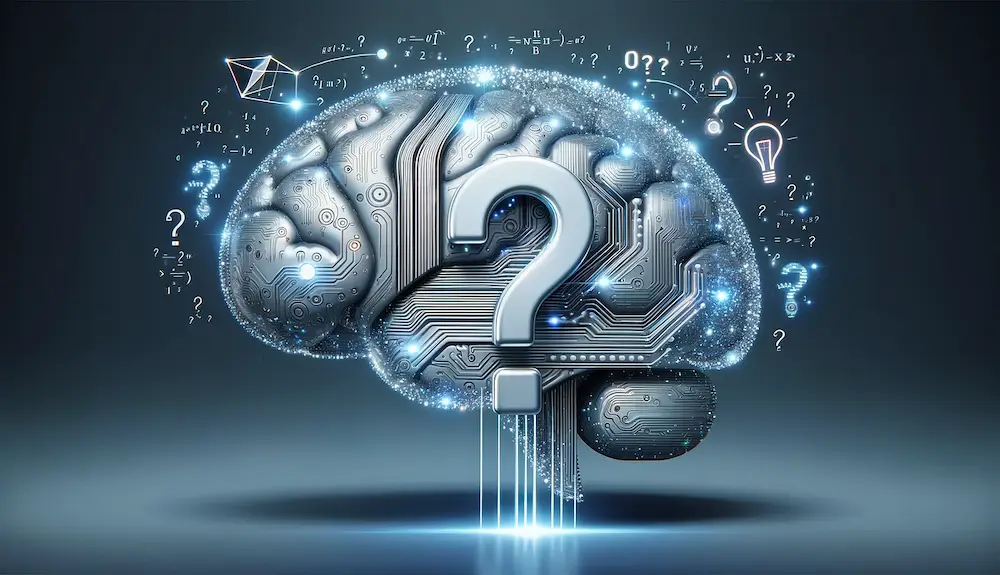As an IT executive with over 25 years in the industry, I’ve seen technology cycles rise and fall. Yet, few have generated as much excitement and confusion as the current wave of AI innovation. Apple’s recent research paper, “The Illusion of Thinking,” lands squarely in the middle of this hype, challenging assumptions about AI’s reasoning abilities and prompting a vital conversation for enterprise decision-makers.
In this post, I’ll break down Apple’s findings, explore what they reveal about the real capabilities and limits of today’s AI, and address the counterpoints and reactions from leading AI developers like OpenAI, Anthropic, and Google. By the end, you’ll have a balanced view to inform your organization’s next steps in AI adoption and governance.
Apple’s Study: A Sobering Look at AI Reasoning
Apple’s research, released just before its 2025 Worldwide Developers Conference, scrutinizes the reasoning abilities of the most advanced large reasoning models (LRMs) including OpenAI’s o3, Anthropic’s Claude 3.7, and Google’s Gemini. These models have been heavily marketed as breakthroughs in “human-like” reasoning, with claims that they can break down complex problems and solve them step by step, much like a person would.
Apple tested these leading AI tools using a series of classic logic and planning puzzles rather than traditional prompts that would likely yield clear answers or instructions. The puzzles included the Tower of Hanoi, Checker Jumping, River Crossing, and Blocks World — benchmarks commonly used to assess algorithmic reasoning, planning, and step-by-step problem-solving abilities in AI systems. These puzzles were selected because they require recursive thinking and multi-step planning, making them ideal for testing whether AI models can genuinely reason or are simply relying on pattern recognition.
Key Findings:
- Collapse Under Complexity: Apple’s team found that while LRMs can handle simple logic puzzles, their performance collapses as problem complexity increases. The models defaulted to shallow, often incorrect outputs, effectively “giving up” on more difficult problems.
- Pattern Matching Over True Reasoning: Rather than reasoning, these models rely on sophisticated pattern recognition. When faced with unfamiliar or dynamic scenarios, their accuracy plummets, exposing fundamental brittleness.
- Counterintuitive Scaling: As tasks become more complex, models paradoxically reduce their reasoning effort, rather than increasing it. Apple describes this as the “illusion of thinking.” The models appear to reason but retreat from complexity when it matters most.
- Algorithmic Execution Fails: Even with explicit step-by-step instructions, models failed to execute reliably. This inability to follow clear logic is a critical shortcoming for any system aspiring to support mission-critical enterprise functions.
Ultimately, Apple’s researchers argue that current industry benchmarks are flawed, often contaminated with training data and focused on final answer accuracy rather than the underlying quality of reasoning. By using controlled puzzle environments, they exposed the models’ inability to generalize or adapt when complexity rises.
Industry Counterpoints: OpenAI, Anthropic, and Google Respond
While Apple’s study casts doubt on the current trajectory of AI reasoning models, it’s critical to consider the perspectives and rebuttals from the leading developers targeted by the report.
OpenAI: “Progress Is Real, But So Are Limits”
OpenAI has long marketed its o1 and o3 models as capable of “spending more time thinking through problems before they respond, much like a person would” and refining their thinking based on mistakes. While Apple’s findings challenge these claims, OpenAI and its supporters argue that:
- Benchmarks Are Evolving: The field is moving rapidly, and new benchmarks are being developed to better capture reasoning quality.
- Human Parallels: AI expert Gary Marcus notes that many humans also struggle with complex logic puzzles like the Tower of Hanoi, especially at higher difficulty levels. The fact that models fail at these tasks doesn’t mean they lack all reasoning; it may simply reflect the current state of technology.
- Real-World Utility: OpenAI points to numerous enterprise deployments where their models deliver substantial value in automating processes, generating insights, and supporting decision-making, even if they’re not perfect at abstract logic puzzles.
Anthropic: “Designed for Real-World Tasks”
Anthropic has promoted its Claude 3.7 Sonnet as specifically designed for “real-world tasks that better reflect how businesses actually use LLMs,” rather than just math and computer science problems. Their counterpoints include:
- Practical Performance: While Apple’s puzzles are useful, they may not fully represent the types of reasoning required in real business applications, where context, nuance, and domain knowledge matter as much as strict logic.
- Continuous Improvement: Anthropic and others are rapidly iterating on model architectures and training methods, and expect continued gains in reasoning ability over time.
Google: “Benchmarks Are Just One Lens”
Google has hyped Gemini 2.5’s reasoning as a breakthrough for handling more complicated problems. In response to Apple’s critique:
- Broader Evaluation Needed: Google argues that no single set of puzzles or benchmarks can capture the full range of AI’s reasoning capabilities, especially as models are increasingly used for multimodal and real-world tasks.
- Recent Advances: Google points to progress in areas like theorem proving, optimization, and real-world problem solving as evidence that AI is making meaningful strides, even if some limitations remain.
Skepticism About Apple’s Motives
Some industry observers and commentators have questioned whether Apple’s study is partly motivated by its own lag in the AI race. Critics point out that Apple has been slow to integrate advanced AI into its products and may be seeking to reframe its cautious approach as “responsible innovation” rather than falling behind. Others note that the puzzles used in the study are standard benchmarks in computer science, and that failing at them does not necessarily indicate a lack of practical utility.
Implications for Enterprises: What Leaders Need to Know
1. AI Is Not (Yet) a Substitute for Human Reasoning
Despite aggressive marketing, current AI models are not ready to replace human expertise in complex decision-making. They excel at automating routine workflows, summarizing documents, or generating code snippets, but falter when asked to reason through novel, high-stakes scenarios. For enterprises, this means AI should augment rather than replace human judgment, especially in regulated or safety-critical environments.
2. Automation Limits in Critical Operations
Apple’s findings should give pause to organizations considering AI for sensitive applications like healthcare diagnostics, financial risk management, or autonomous systems. Overreliance on AI could introduce significant operational and reputational risks if models fail silently in complex situations.
3. Rethinking AI Evaluation
Traditional AI benchmarks focus on final answers, not the quality of the reasoning process. Apple’s approach, analyzing “reasoning traces” in controlled environments, offers a more rigorous way to assess AI capabilities. Enterprises should demand similar rigor from vendors and internal teams, moving beyond superficial metrics.
4. Policy, Governance, and AI Safety
The research also has policy implications. Apple’s results suggest that fears of imminent artificial general intelligence (AGI) may be overblown, allowing leaders to focus on practical governance, capacity building, and evidence-based policy rather than panic-driven regulation. Transparent reporting of AI limitations, robust human-in-the-loop processes, and clear accountability frameworks are essential as organizations scale AI adoption.
5. Strategic Differentiation and Brand Trust
Apple’s cautious, user-centric approach to AI (prioritizing privacy, transparency, and incremental integration) contrasts with competitors who have rushed to embed AI across every product. For enterprises, this is a lesson in aligning AI initiatives with core brand values, customer trust, and long-term strategy, rather than chasing the latest hype cycle.
A Nuanced Middle Ground
The reality is that both the critics and the defenders of current AI models have valid points. Apple’s research exposes real, fundamental limits in today’s reasoning models, especially when it comes to generalizing logic and handling complexity. At the same time, these models are delivering tangible value in many enterprise scenarios, and their capabilities are improving rapidly.
A Critical Question for Leaders
“Is my organization building its AI strategy on genuine capability or on the illusion of thinking?”
If your AI roadmap is based on the assumption that today’s models possess human-level reasoning, you are at risk of overpromising, underdelivering, and exposing your business to operational and reputational harm. Apple’s research underscores the need for a measured, evidence-based approach: leverage AI for what it does well, maintain robust human oversight, and invest in continuous evaluation of both strengths and limitations.
Final Thought
Apple’s “The Illusion of Thinking” is more than a critique; it’s a call to action for leaders to demand transparency, ground their strategies in reality, and build resilient organizations that can adapt as AI evolves. Don’t let hype or skepticism drive your decisions. Instead, foster a culture of critical inquiry, continuous learning, and responsible innovation.
Are you ready to lead with clarity rather than illusion? The future belongs to those who see and shape AI’s reality, not just its promise.




